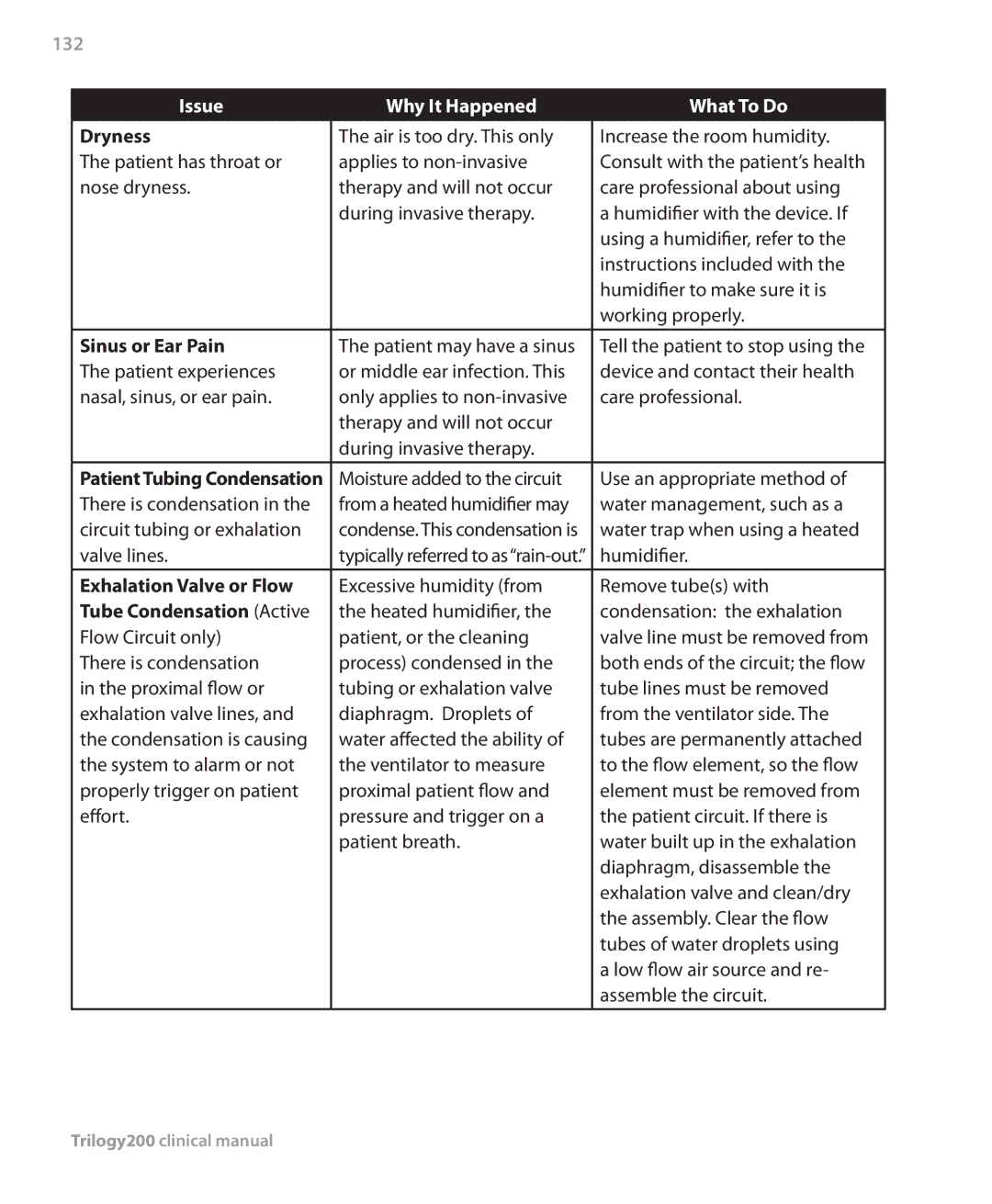132
Issue | Why It Happened | What To Do |
Dryness | The air is too dry. This only | Increase the room humidity. |
The patient has throat or | applies to | Consult with the patient’s health |
nose dryness. | therapy and will not occur | care professional about using |
| during invasive therapy. | a humidifier with the device. If |
|
| using a humidifier, refer to the |
|
| instructions included with the |
|
| humidifier to make sure it is |
|
| working properly. |
Sinus or Ear Pain | The patient may have a sinus | Tell the patient to stop using the |
The patient experiences | or middle ear infection. This | device and contact their health |
nasal, sinus, or ear pain. | only applies to | care professional. |
| therapy and will not occur |
|
| during invasive therapy. |
|
Patient Tubing Condensation | Moisture added to the circuit | Use an appropriate method of |
There is condensation in the | from a heated humidifier may | water management, such as a |
circuit tubing or exhalation | condense. This condensation is | water trap when using a heated |
valve lines. | typically referred to | humidifier. |
Exhalation Valve or Flow | Excessive humidity (from | Remove tube(s) with |
Tube Condensation (Active | the heated humidifier, the | condensation: the exhalation |
Flow Circuit only) | patient, or the cleaning | valve line must be removed from |
There is condensation | process) condensed in the | both ends of the circuit; the flow |
in the proximal flow or | tubing or exhalation valve | tube lines must be removed |
exhalation valve lines, and | diaphragm. Droplets of | from the ventilator side. The |
the condensation is causing | water affected the ability of | tubes are permanently attached |
the system to alarm or not | the ventilator to measure | to the flow element, so the flow |
properly trigger on patient | proximal patient flow and | element must be removed from |
effort. | pressure and trigger on a | the patient circuit. If there is |
| patient breath. | water built up in the exhalation |
|
| diaphragm, disassemble the |
|
| exhalation valve and clean/dry |
|
| the assembly. Clear the flow |
|
| tubes of water droplets using |
|
| a low flow air source and re- |
|
| assemble the circuit. |
